In the shadow of Lincoln University – one of Pennsylvania’s four “state affiliated” universities (its fellows being Pitt, Temple, and Penn State) – can be found the small and stoic Hosanna AUMP Church. One pragmatic story tall, with a grand total of eight windows on four sides, the modest footprint of Hosanna belies its cultural significance, yet remains unevaluated for inclusion in the National Register.
Hosanna Church, which was established in 1843, and completed by 1845, is the last architectural remnant of the village of Hinsonville, a free black community founded in antebellum Chester County, Pennsylvania.
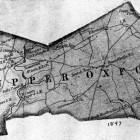
1847 Map of Upper Oxford Township in Chester County. The Hosanna Church is marked on the map as “African M.E. Church.” Here highlighted in yellow.
The acres that would later become Hinsonville were first purchased in 1829 by a free black man named Edward Walls, who was born in Maryland. The first permanent dweller of the area was another free black man from Maryland, Emory Hinson, who was the ultimate namesake for the village that would emerge a mere six miles north of the Mason-Dixon Line. This location ideally situated the community to flourish with the influx free black men and their families who sought to escape the restrictive legislation enacted upon African-Americans in Maryland throughout the 1820s, 1830s, and 1850s. Hinsonville, historically located at the crossroads of Russellville-Elkdale Road and Oxford-Jennersville Road in the southern tip of Upper Oxford Township, developed as an agricultural community rife with independent sentiment.
The establishment of Hosanna Church is interminably tied to the experiences of the free black population in antebellum Pennsylvania. In the book Hinsonville, A Community at the Crossroads: The Story of a Nineteenth Century African-American Village, author Marianne Russo writes, “[The] northern attitudes of whites paralleled southern attitudes… Blacks were excluded by law and by custom from steamers, trolley cars, railroads, hotels, restaurants, and much else. They were not welcome in most churches, even Quaker meeting houses, although in some they were relegated to balconies or special benches that set them apart from the white congregation. The humiliation and outrage wrought by the various forms of discrimination led to the gradual establishment by blacks themselves of separate institutions, in particular their own churches, which soon shaped the core of their lives.”[i]
In this way, Hosanna is a representative mid-nineteenth century example of the movement towards independent African churches in the northeastern United States that had begun in the half century after the Revolutionary War as part of the Second Great Awakening. Hosanna Church began life associated to the AME (African Methodist Episcopal) movement, which was born of the Free Africa Society in Philadelphia in the late 1780s, and at one point or another found itself denominated as all of the main branches of the African Methodist movement: AME, AMEZ (African Methodist Episcopal Zion), and, finally, AUMP (African Union Methodist Protestant.) In conjunction with the historical significance of this larger African religious movement, Hosanna also exists as a monument to the tenacity of the local free black men and women who settled antebellum Pennsylvania. Russo writes, “The Hosanna Church quickly became more than just a place of worship. Like black churches elsewhere, past and present, it became the pivotal institution in the community, both inspiring and empowering its members.”[ii] Wuanda M. T. Walls, in the article “Grandfather’s Stories, Freedom, and the Hosanna Church,” which was published in Chester County Town and Country Living in the spring of 2001, speaks of the way that Hosanna emerged as the thriving village center of Hinsonville for a diverse variety of social gatherings, in addition to its religious services, weddings, and funerals.[iii]
The development of the Hosanna Church is a reflection of the triumphs of free black settlements in the achievement of agency in the antebellum northeastern United States. Furthermore, Hosanna’s continued existence and significance to the local community – the descendants of Hinsonville settlers, a number of whom maintain residency in the local community, still annually meet at the church to celebrate the successes of their free black ancestors – is relatively unique throughout the United States. Although dozens of free black towns and villages sprung up in the Northern and Western portions of the antebellum and Reconstruction-era United States, shockingly few still boast architectural resources for study – and many exist only from an archaeological perspective.
Hinsonville is also unique because it holds the distinction of being consumed by the product of its own ambition, rather than having disappeared due to decay. Lincoln University, the oldest historically black university in the United States, was first established in 1854 as the Ashmun Institute, a degree granting institution of higher learning. Ashmun Institute was a seminary supported by the original residents of Hinsonville to provide theological education to the young men of Hosanna Church. With the success of the Ashmun (which was renamed Lincoln University in 1866), the university campus expanded into the space that was occupied by Hinsonville. The small community that now surrounds the university is known as Lincoln University Village.
Although ultimately consumed by the growth of Lincoln University, the story of Hinsonville continues to exist through Hosanna Church. In addition to its apparent rarity as an extant remnant of a settlement founded by free black citizens in antebellum North America, the history of the little church connects it with giants of American history. These giants include such esteemed Lincoln University graduates as U.S. Supreme Court Justice Thurgood Marshall and Harlem Renaissance poet Langston Hughes, as well as Frederick Douglass and Sojourner Truth, Abolitionist leaders who decried slavery from the pulpit of Hosanna, and Harriet Tubman, who “conducted one or more of her famous Underground Railroad Trains along the [Hinsonville] ‘line’”[iv] on which Hosanna Church was included as a station.
Modest and unadorned, the square-footage and simplicity of Hosanna Church provide an intimate and uncommon perspective into a portion of the American experience that is often discussed but rarely seen in person. The Hosanna Church, which has not been surveyed or listed to date, is undoubtedly one of Pennsylvania’s resources of historical and cultural significance.
Elizabeth Shultz is a May 2014 graduate of Lock Haven University with a degree in Public History, and will attend Tulane University’s School of Architecture in the fall of 2014 to commence graduate studies in Historic Preservation. She is currently a THIS (The Harrisburg Internship Semester) intern in the Bureau for Historic Preservation.
[i] Marianne Russo, Hinsonville, A Community at the Crossroads: The Story of a Nineteenth-Century African-American Village (Selinsgrove, PA: Susquehanna UP, 2005), 13-14.
[ii] Marianne Russo, Hinsonville, A Community at the Crossroads: The Story of a Nineteenth-Century African-American Village (Selinsgrove, PA: Susquehanna UP, 2005), 50.
[iii] Wuanda M. T. Walls, “Grandfather’s Stories, Freedom, and Hosanna Church,” Chester County Town and Country Living, 48.
[iv] Horace Mann Bond, Education for Freedom: A History of Lincoln University, Pennsylvania (Lincoln University, PA: Lincoln UP, 1976), 225.
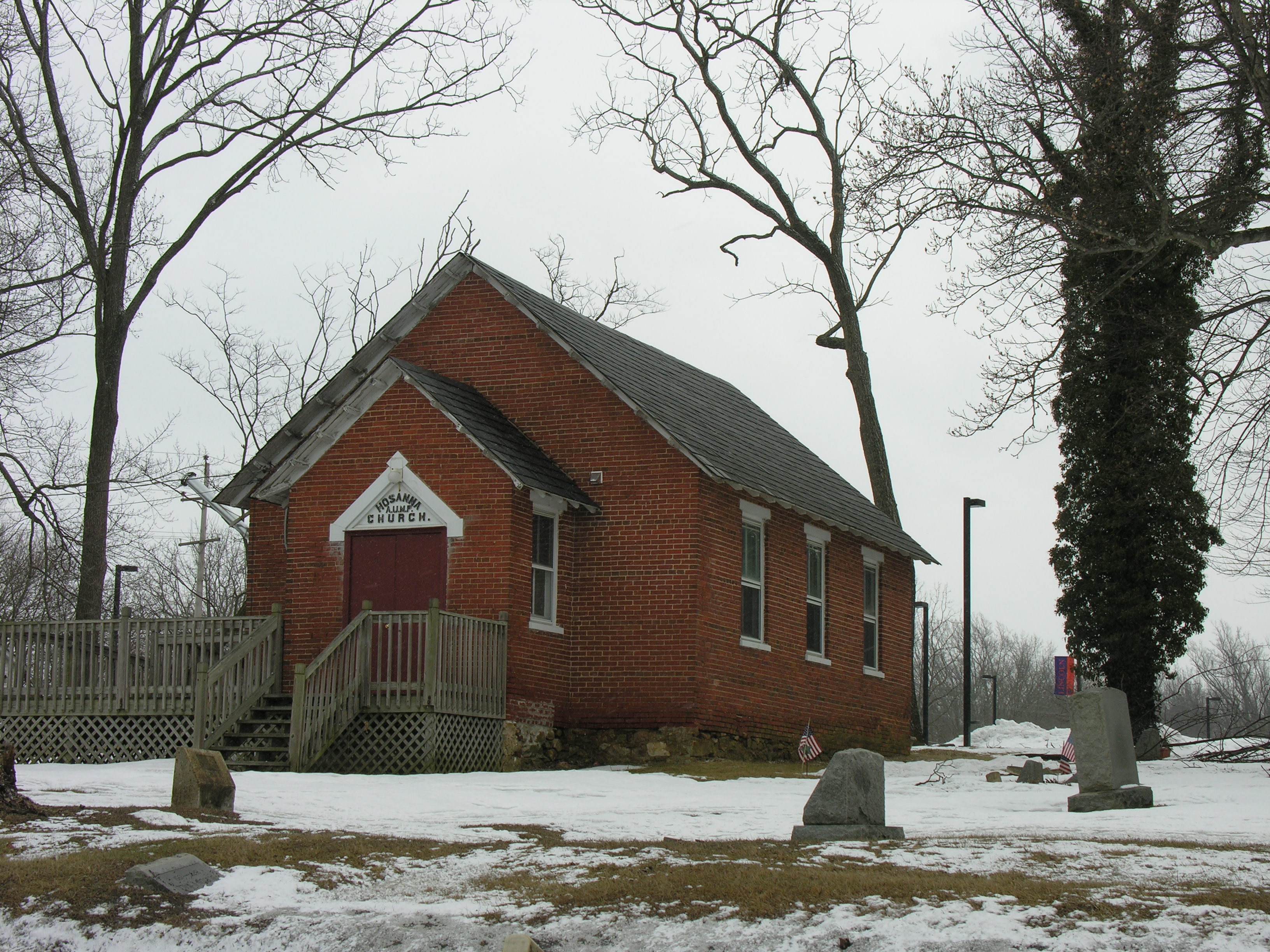
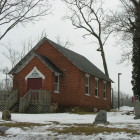
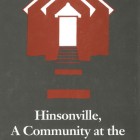
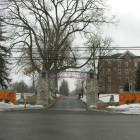
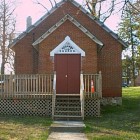
Ms. Schultz: Thank you for not only paying attention but acting upon an obvious story so significant to the Pennsylvania story as a whole; especially the plight of “Freedmen” during the antebellum era.
A. Jami Craig, AALU National Historian
Thanks so much for your feedback – I certainly feel that the story of Hosanna/Hinsonville/Lincoln University is incredibly important to our understanding of the nuances of life in antebellum Pennsylvania (and possibly beyond!) Thanks again!
Ms. Schultz – Appreciate your research on the Hosanna Church at historic Lincoln University. Your work helps garner support to create a historical district in the area. You selected a good curriculum at Tulane to peruse graduate studies. Hopefully our paths will cross in New Orleans. David Williams Lincoln University 1965.
The stories of Hosanna Church and the surrounding areas are fascinating and deserve to be more widely known! I am very excited to begin my studies at Tulane – thank you for taking the time to leave feedback!
Well written and researched history of my alma mater, The Lincoln University! Kudos to you, Ms. Schultz. Congratulations upon your matriculation and pursuit of further education. Hopefully you will find time to focus your considerable talents on the many OTHER structures of historical relevance on the main campus. We look forward to that!
Lincoln University certainly has the privilege of having both a fascinating history and a lovely historic campus! Thanks for the feedback!
Fantastic job, Elizabeth! What a beautifully written and important article. It’s great to see that you were able to use your education and what you’ve learned so far at your internship to discover an area of need and speak up to make a change. Well done!
Thanks Briana! I have loved every second!
Excellent article about my alma mater!
Great article Elizabeth! Hozanna Church is either adjacent to or included in the boundaries of the National Register eligible Lincoln University Historic District. The historic district was first evaluated in 1985 and its eligibility was confirmed at a 2014 SHPO site visit.
I am a decendant of the Walls/ O’Walls family. It was a complete THRILL to read this article!
Thank you! I am glad you enjoyed it!
Great story but it bothers me that no recognizes the fact that the church building standing now is not the original church. The church has a double corner stone. The building now standing was completed in 1896. But will soon fall down if no one preserves it.
Hi! I have done some reading on this, and I’m very interested to know what, besides the datestone, indicates that the church was actually rebuilt? My understanding is that the parishioners wanted to build a new church, and even broke ground, but there was a dispute over the design amongst members of the church (which may have stemmed from theological differences). This lead to legal proceedings to determine the ownership of the church property. My understanding is that it was determined that the money that was raised to build the new Hosanna Church was awarded to a group of former Hosanna parishioners who built a new church down the road closer to the train station – leaving the Hosanna congregation significantly smaller and bereft of its building find. The datestone on that church seems to agree with this timeline. This could explain why Hosanna still seems to be the same size as is indicated in early documents and is without a basement (as had been planned for in the new construction).
But! That being said, you are much closer to Hosanna than I, and I would welcome the opportunity to learn more about Hosanna!
Thanks!
This is the original location of Hosanna Church. I am a descendant of Elias and Hannah Walls Draper and along with my sister have been doing research on Elias Draper. My mother is a Draper.
Hello Kathleen – thanks so much for backing up the original location of Hosanna! I also am confident that this is the original location, but my understanding is based on the hard work of researchers like you who are closely connected with the history, and so it is very meaningful that you are also confirming this as the original site! Thank you so much for contributing to the body of knowledge!
Phenomenal rendering on an American Story that still has not been fully researched and told. By God’s grace Azikiwe-Nkrumah Hall (Oldest Free Standing Building on Lincoln’s) at Lincoln and a stone’s throw from Hosanna was recently added to the National Trust’s list of 11 Most Endangered Buildings list in America. A number of Lincoln alums including myself are focused on Lincoln and Hosanna getting their just recognition and being preserved. Your research is important Elizabeth and we thank you for focusing a portion of your studies here.
What a wonderful story. My Great, Great, Great Grandfather George W Duffy was one of the Soldiers of Hinsonville during the Civil War. Lots of my ancestors are buried in Hosanna Cemetary.
Thank you so much.
Sharon Whitaker
I attended Hosanna as member in the mid to late 1970s as a young woman/teenager. Great article.
This is a very interesting article. I also attended Hosanna with my family as a child in the 70s. I have very fond memories of our services and singing in the junior choir.
The Upper Oxford Township Historical Commission would like to lend support to those who have a connection to Hosanna so that this church and cemetery can preserved in perpetuity. The Commission currently meets on the first Tuesday’s of the month at 10:00 a.m. The township office # is 610-932-9233 for more information.
In a quest to discover my mother’s paternal ancestors, I have just discovered that my grandmother was Lydia Jane Walls, daughter of George D Walls. I could not be more proud. The paper trail for Lydia and her son – Harry White – is thin, my grandfather moving away and changing his name. He ended up in Chicago as Charles Cunnard and I have ended up in Oxford, England. Funny old world. Thank you.
This was my grandmothers church
Christie Lee she was a walls
Thank You, Kindly Elizabeth for another well written piece about Hosanna AUMP Church and Family Cemetery.
Hello Family,
I am too a direct descendant of Patrick & Rachel Walls. (5th Great Grandparents)
Lydia Walls-Jay and husband (Joshua) sons, William, Wesley & George Jay along with first cousins Josiah & James Cole and Albert G. Walls all served with the famed Company B. 54th Regiment Massachusetts Volunteer Infantry.
William (3rd GGF) & Wesley Jay and several men who served during the Civil War are buried in the cemetery.
Besides this wonderful article.. There’s two important books about our pioneering families.
1. Hinsonville, A Community at the Crossroads.
2. Hinsonville’s Hero’s, Black Civil War Soldiers of Chester County Pennsylvania
– Bernard M. Lambert
Thank You, Kindly Elizabeth for another well written piece about Hosanna AUMP Church and Family Cemetery.
Hello Family,
I am too a direct descendant of Patrick & Rachel Walls. (5th Great Grandparents)
Lydia Walls-Jay and husband (Joshua) sons, William, Wesley & George Jay along with first cousins Josiah & James Cole and Albert G. Walls all served with the famed Company B. 54th Regiment Massachusetts Volunteer Infantry.
William (3rd GGF) & Wesley Jay and several men who served during the Civil War are buried in the cemetery.
Besides this wonderful article.. There are two important books about our pioneering families one shouldread.
1. Hinsonville, A Community at the Crossroads. (which was already mentioned)
2. Hinsonville’s Hero’s, Black Civil War Soldiers of Chester County Pennsylvania
– Bernard M. Lambert
Hosanna AME Church-Darlington MD, just a few miles from Conowingo dam. Our churches are very similarly constructed. Our church was built in 1880.